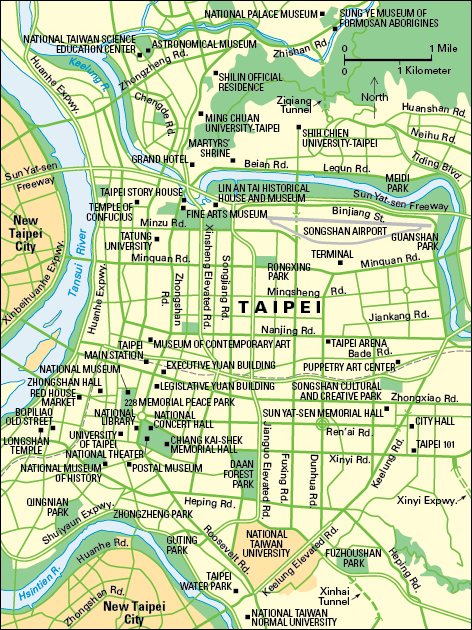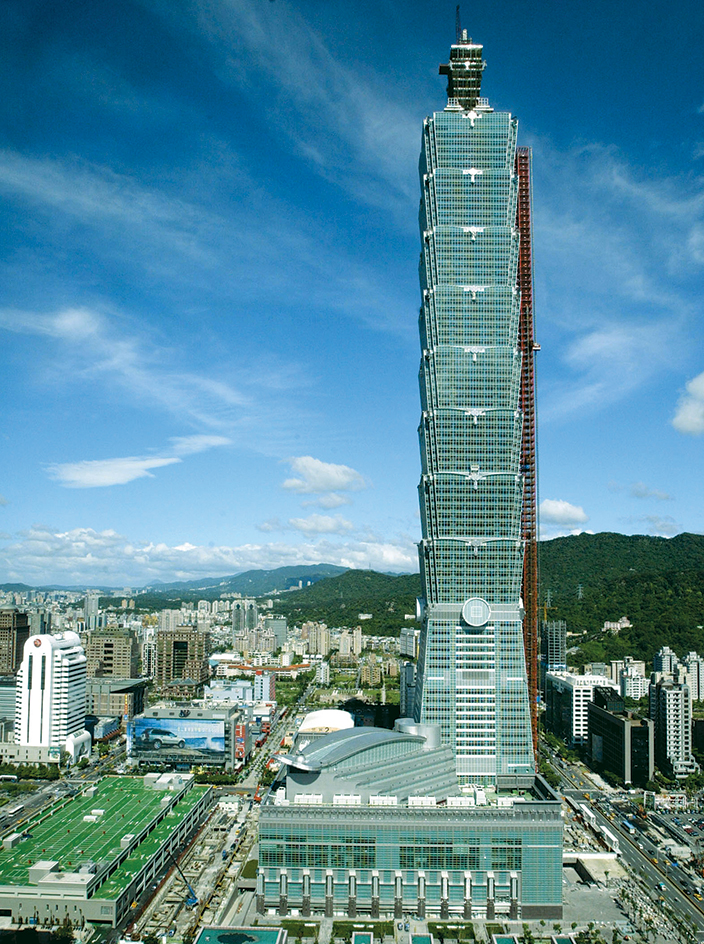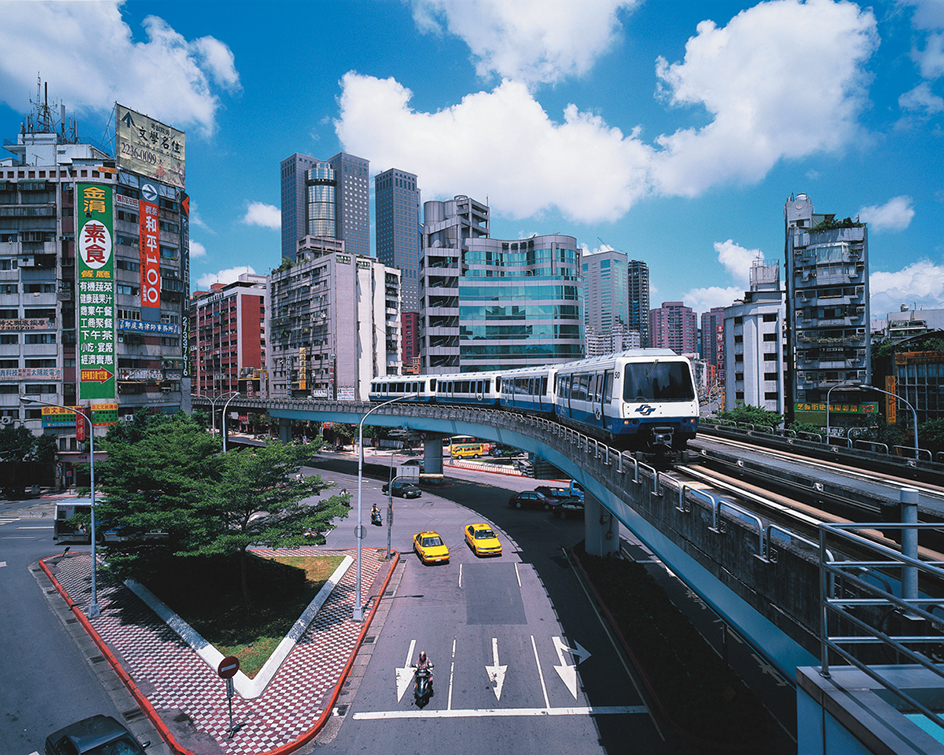Taipei << ty pay or ty bay >> (pop. 2,524,000; met. area pop. 6,896,000) is the capital and largest city of the island country of Taiwan. It lies on the Hsintien, Keelung, and Tanshui rivers at the north end of the island of Taiwan. The name Taipei means north Taiwan.


Taipei and its surrounding area make up the commercial, cultural, and tourist center of Taiwan. Taipei’s landmarks include the National Chiang Kai-shek Memorial Hall; the Longshan Temple, which is believed to be the oldest Buddhist temple in the city; and the Grand Hotel, which resembles an ancient Chinese palace. Taipei 101, in the city’s business district, is one of the world’s tallest buildings. The city’s National Palace Museum houses an outstanding collection of Chinese art. Taipei has large department stores and exotic bazaars. It is the home of several universities, including National Taiwan University, National Taiwan Normal University, and National Chengchi University.

In 1967, Taipei annexed the towns of Chingmei, Mucha, Nankang, Neihu, Shihlin, and Peitou. As a result, the city grew from 26 to 105 square miles (67 to 272 square kilometers).
Taipei is one of the most densely populated cities in the world. Overcrowded housing is a problem in the city. Many high-rise buildings have been erected in Taipei, with little concern for zoning laws. Heavy traffic is another problem. Air pollution has resulted from motor vehicles and the factories in and near the city.

Products made in Taipei include textiles, electrical machinery and appliances, wires and cables, refrigerators, motorcycles, rubber goods, and various handicrafts. Numerous airlines serve nearby Taiwan Taoyuan International Airport. Railways and bus lines connect the city to all parts of Taiwan.
The Chinese began making large settlements in Taiwan during the 1600’s. The Chinese founded Taipei in 1708. Japan took control of Taipei and the rest of Taiwan from China in 1895. The Japanese made Taipei the administrative and economic center of the island and greatly expanded the city’s area.

After World War II ended in 1945, Japan returned Taiwan to China. In 1949, the army of the Chinese Communist Party overthrew the Nationalist government of China. The Nationalist Chinese, led by Chiang Kai-shek, retreated from the mainland to Taiwan and established their own government in Taipei. Since then, Taipei and its suburbs have expanded greatly.
See also Taipei 101.
